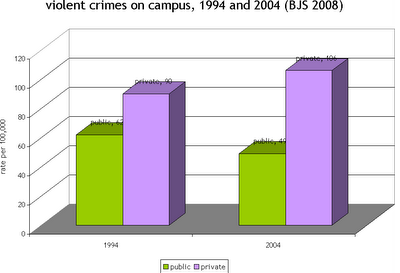 sometimes department chairs just gaze in wide wonder at the issues awaiting them on any given morning. i arrived today, for example, to find that someone had broken into the li’l glass bookcase showcasing “new releases” by our faculty.
sometimes department chairs just gaze in wide wonder at the issues awaiting them on any given morning. i arrived today, for example, to find that someone had broken into the li’l glass bookcase showcasing “new releases” by our faculty.
dang, i really like that case. it is positioned outside some molasses-slow elevators, so it draws great attention to the many fine books written by our faculty. the thieves only made off with about a third of the monographs in the case, so i couldn’t resist trying to suss out why they selected some books and left others behind.
part of me worried that the miscreants were students upset with book costs, but i’m pretty sure it was just kids. unlike the university of chicago, the university of pennsylvania, or other urban campuses i’ve visited, the minnversity maintains a light security presence. i often encounter small groups of males in their mid-teens walking the halls on sundays, sometimes just before i discover smashed-in vending machines or other mischief. i’d long assumed that bitter faculty members had been smashing the candy machines, but now i’m starting to put two and two together.
at least the miscreants broke the lock, rather than smashing the more-costly-to-replace glass case itself. a few mysteries remain:
1. why did they bother breaking into a locked case to steal books when there was a free shelf just five feet away, loaded with books that had greater resale value? the poor saps could’ve taken a free copy of earl babbie’s bestselling methods book, for example, which would have brought a far greater return on their efforts than the more esoteric titles in the case. i think that the locked case probably signaled market value, so we might have been better off leaving our titles on an unlocked shelf and locking up some old telephone directories and 1974 software manuals instead.
2. how did they decide which books to steal? i was outraged (outraged, i tell you!) that they literally reached right past my book but stole both of hartmann’s titles. the nerve! didn’t they read the jackets? c’mon, which of us is out there advocating for the rights of convicted felons? i was getting pretty worked up about this until my research assistant reassured me that, of course, the thieves must have already purchased several copies of locked out: felon disenfranchisement and american democracy. aside from their anti-uggen bias, they didn’t seem to choose hardcover over paperback, or qualitative over quantitative, or brand new over slightly older, or attractive cover art over less-attractive cover art. why didn’t they just grab ’em all? my working theory involves a fargo-like dispute among the co-conspirators, so i wouldn’t be surprised to discover, say, a severed human foot beneath our industrial paper shredder.
3. the replacement costs will be high for the department, but what is the street value of a handful of sociology books? wouldn’t they have been better off breaking into the candy machines again?
4. it looks like i’ve got a decision to make. should we adopt the time-tested but lame method of stapling book jackets to a department bulletin board? or, should we stick to our guns, buy some new books, and bring in a serious security force?
 this story caught my eye this week — it is an interesting example of creative — and possibly restorative–Justice. the new york times sets up the story as follows: “What punishment should be imposed on a man who shot a police officer almost 40 years ago and fled to Canada, but went on to live an upstanding life as a husband and father who worked in a library?”
this story caught my eye this week — it is an interesting example of creative — and possibly restorative–Justice. the new york times sets up the story as follows: “What punishment should be imposed on a man who shot a police officer almost 40 years ago and fled to Canada, but went on to live an upstanding life as a husband and father who worked in a library?”




